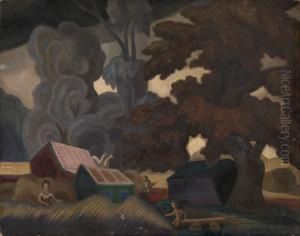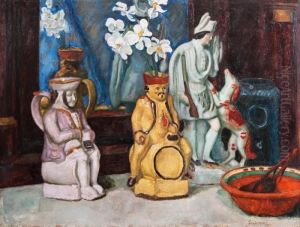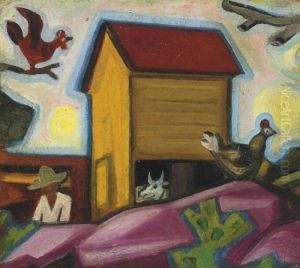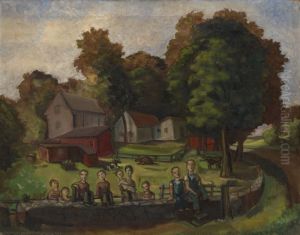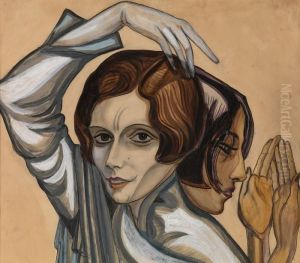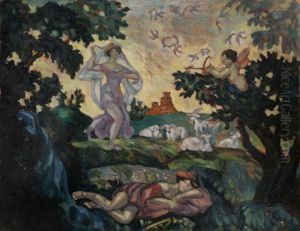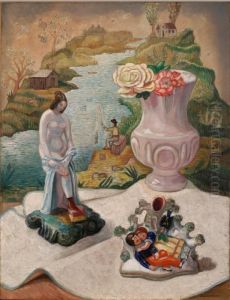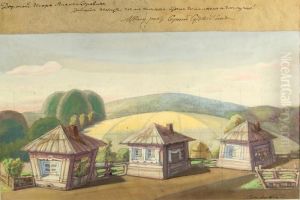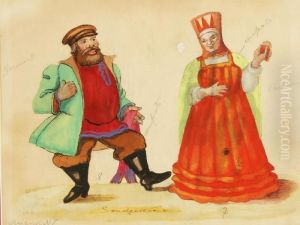Sergei Yur Evich Sudeikin Paintings
Sergei Yurievich Sudeikin, also known as Serge Soudeikine, was a Russian artist and stage designer, born in Smolensk, Russia, in 1882. He was an influential figure in the Russian avant-garde movement during the early 20th century, particularly known for his work in theater set and costume design. Sudeikin's work was characterized by a flamboyant style and often incorporated elements of Symbolism, Art Nouveau, and later Art Deco.
Sudeikin began his artistic education at the Moscow School of Painting, Sculpture and Architecture, and continued at the Imperial Academy of Arts in Saint Petersburg. He became associated with the Mir Iskusstva (World of Art) movement, which promoted artistic individualism and other European modernist styles, opposing the naturalistic tendencies of the Russian art establishment at the time.
During the 1910s, Sudeikin became known for his extravagant and imaginative stage designs. He worked with famous Russian theatrical figures such as Sergei Diaghilev, Nikita Balieff, and Vsevolod Meyerhold. His innovative approach to stage design was influential in the development of Russian theater, and he contributed to productions for the Ballets Russes and other significant theatrical companies.
Following the Russian Revolution, Sudeikin's artistic style did not align with the new Soviet ideology, which favored a more realistic and utilitarian aesthetic, and in 1920, he emigrated to the United States. In America, he continued his work as a stage designer for Russian émigré theater troupes and for American theater and opera houses. His designs during this period reflected his interest in the exotic and fantastical, which resonated with the escapism sought by audiences during the interwar period.
Sudeikin's personal life was as colorful as his designs. He was known for his flamboyant personality and bohemian lifestyle. He married several times, with his third wife being the famous Russian actress Vera de Bosset, who later became the wife of composer Igor Stravinsky after her divorce from Sudeikin.
Sergei Sudeikin died in 1946 in Nyack, New York, leaving behind a legacy of vibrant and innovative art that bridged the Russian and Western theatrical traditions. His works are held in various museum collections, and his impact on stage design continues to be acknowledged by art and theater historians.
